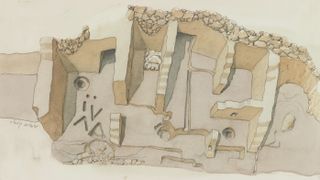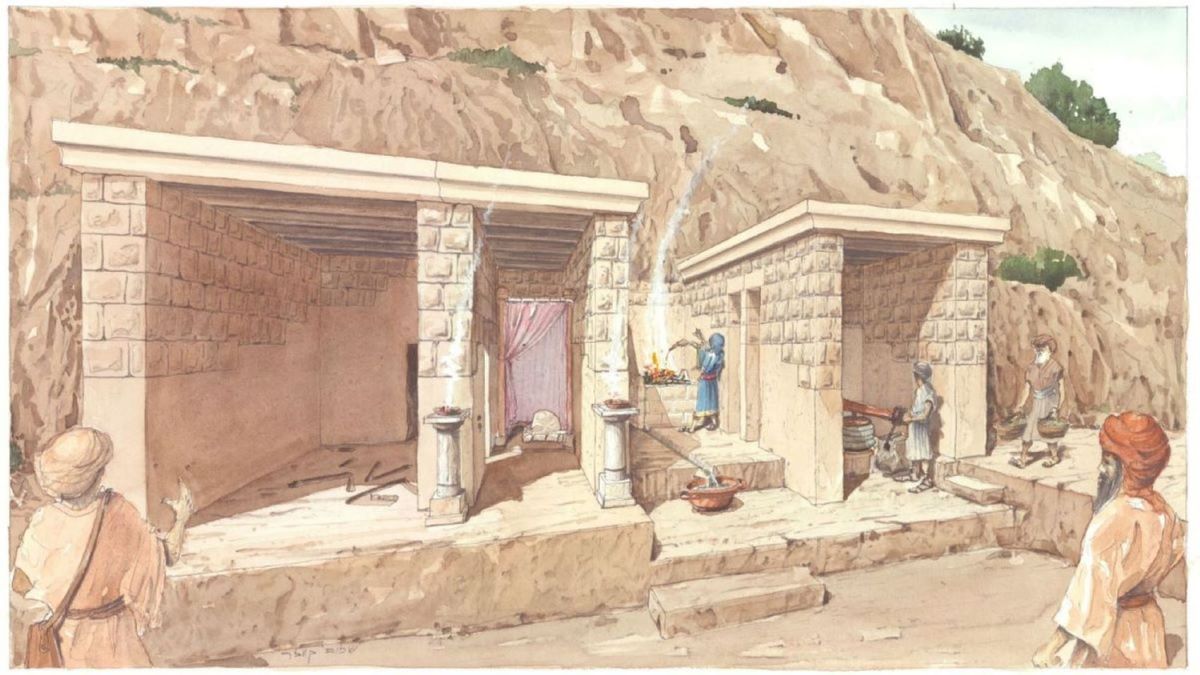Archaeologists in Israel have unearthed a series of stone rooms and objects that were likely used for worship and ritual practices in the Kingdom of Judah 2,800 years ago, they say.
The discovery is the only known ritual structure from this period in Jerusalem and one of just a handful unearthed so far in Israel, according to a statement.
Among the ruins of eight rock-cut chambers, archaeologists found an oil press, a winepress, an altar and a large standing stone, or sacred pillar, known as a “massebah” in the Hebrew Bible. These artifacts date back to the First Temple period (1200 to 586 B.C.) of ancient Israel, suggesting ritual and cultic practices took place close to the First Temple — the first Jewish temple, built by King Solomon, in which to worship God, according to Jewish tradition — which stood just a few hundred yards away on Jerusalem’s Temple Mount.
Archaeologists discovered the structure on the eastern slope of the City of David, an archaeological site in East Jerusalem that is considered to be the city’s ancient settlement core. The northern part of the structure was already known, having been unearthed in 1909 by British army officer Montagu Parker, but the site then stood untouched for 100 years.
Related: ‘Mind-blowing’ discovery reveals 5,000-year-old cultic building in Israel
“When we began excavating the City of David in 2010, we discovered that the site had been sealed with fill from the eighth century BCE, indicating it had fallen out of use during that time,” Eli Shukron, an archaeologist who led the excavations on behalf of the Israel Antiquities Authority, said in the statement.
The reason for this could be the implementation of religious reforms by the then King of Judah, Hezekiah, who sought to eliminate ritual sites and concentrate religious worship at the First Temple, Shukron said.
It’s unclear which specific rites people performed in the newly unearthed structure, but evidence suggests the rooms were used for worship and related cult practices possibly involving animal sacrifice, according to an article co-authored by Shukron and published Jan. 12 in the Israel Antiquity Authority’s journal ‘Atiqot.
“The most important find was revealed in room 4, comprising the stone massebah and the platform built around it,” the researchers wrote in the article. This room was “undoubtedly” used for worship, the researchers said, and it’s likely the room next to it, room 5, was also used for religious activities and potentially sacrifice.

Room 5 has three V-shaped grooves carved into the stone floor, as well as other shapes engraved on the floor and walls. The grooves are “unique and ambiguous,” and worshippers may have used them to crush grapes for wine and nuts for oil, according to the article.
“Another possibility is that the V-shaped grooves were used for a loom,” the researchers noted in the article — although Shukron thinks they may have held a tripod used for ritual practices, according to the statement.
Close to the structure, archaeologists found a small cave filled with objects also dating to the eighth century B.C. — including cooking pots, jars with ancient Hebrew inscriptions, scarabs, loom weights, grinding stones and stamped seals.
Although the purpose of the cave remains unclear, its discovery supports the interpretation of the site as a cultic complex, according to the article. “This complex offers profound evidence for the diversity of cultic practices in the capital of the Kingdom of Judah,” the researchers wrote.


